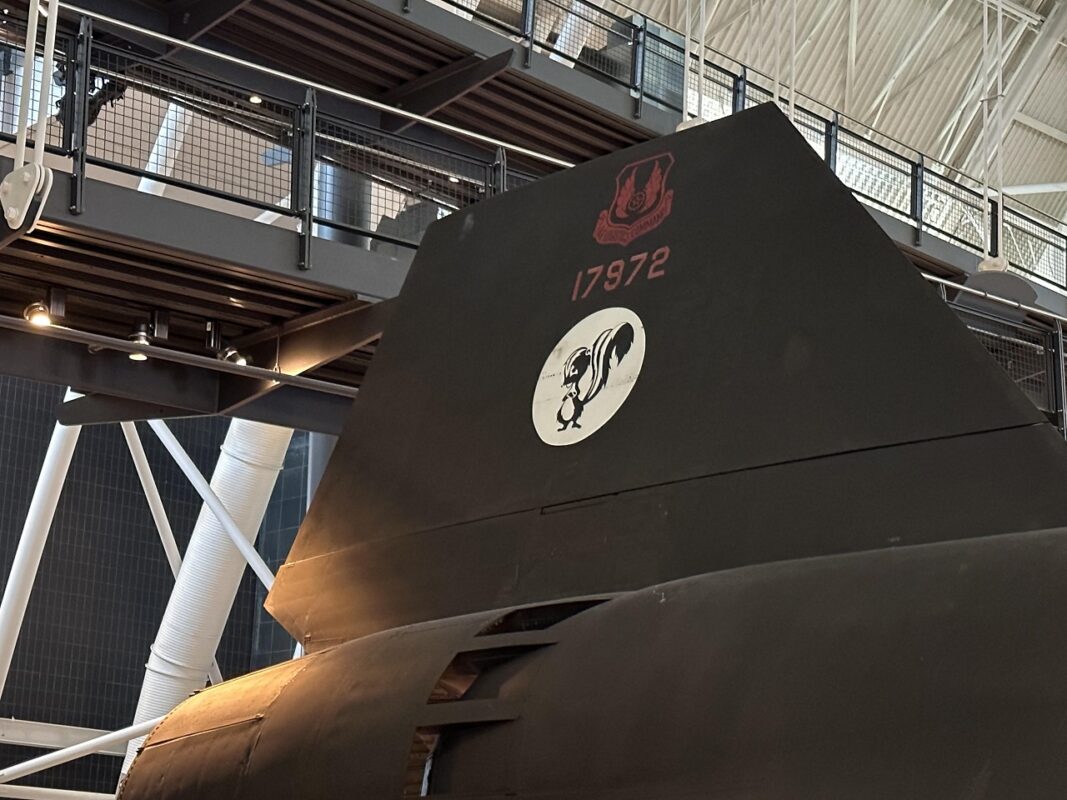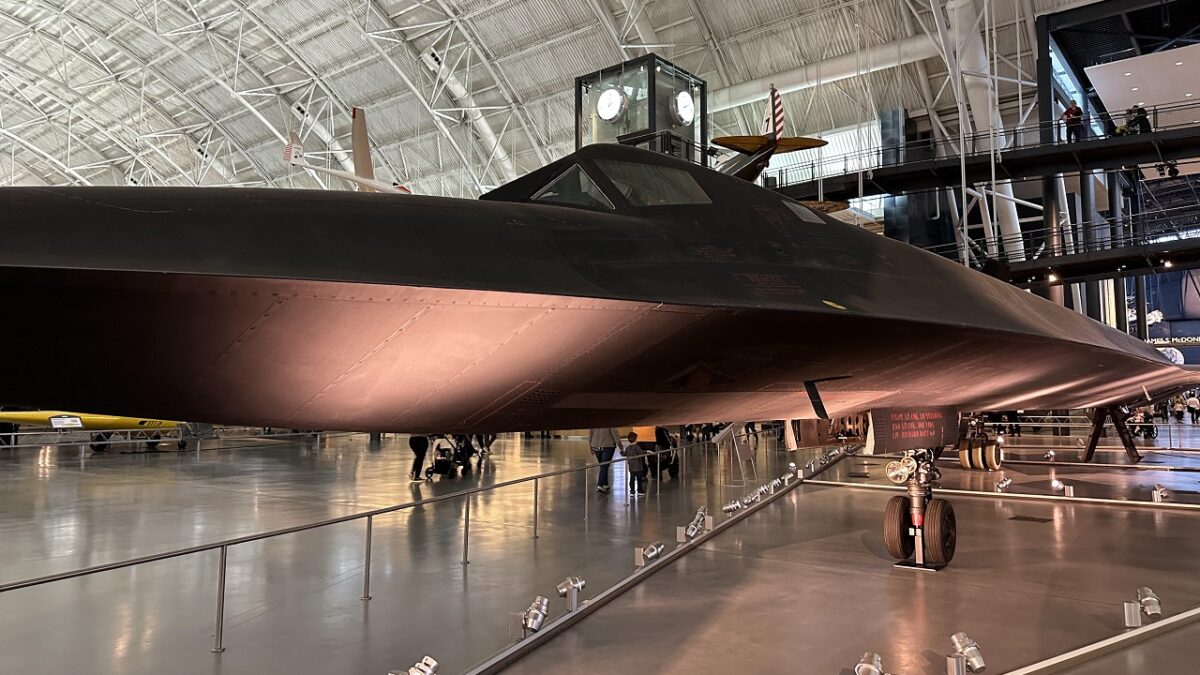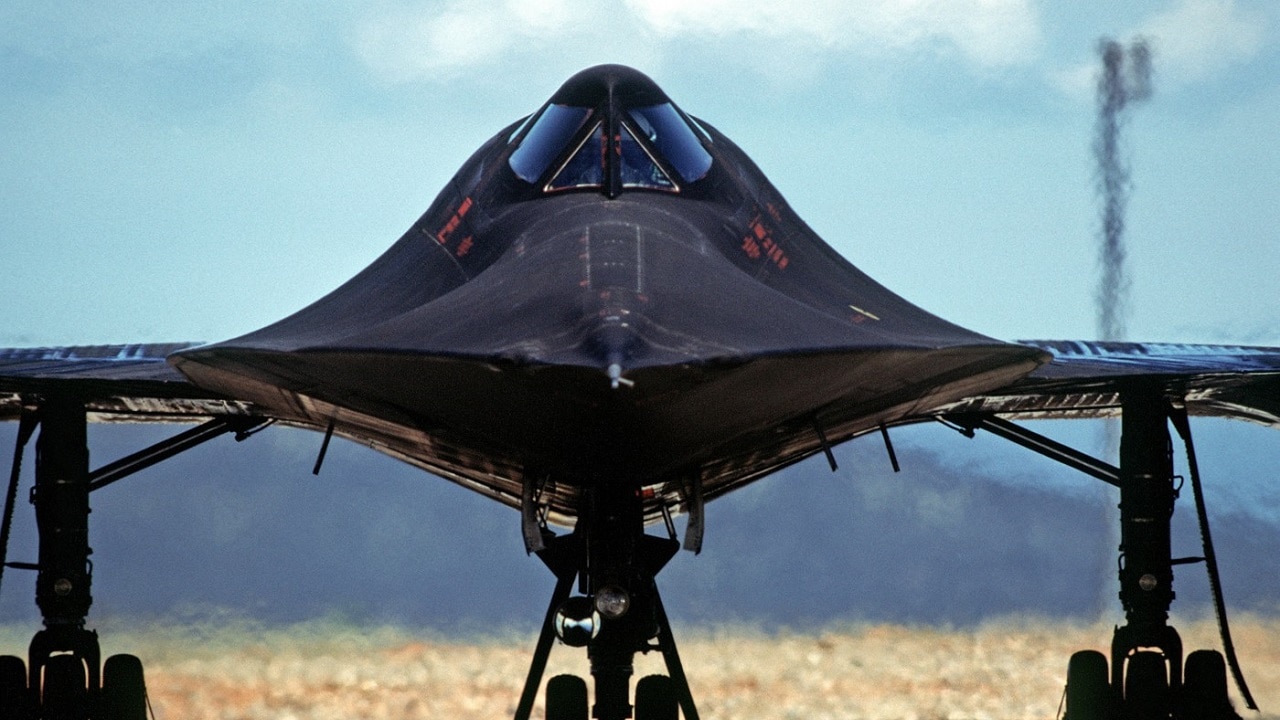SR-71: Never Shot Down, But the Soviets Damn Sure Tried – The legendary SR-71 Blackbird, Still the world’s fastest air-breathing manned aircraft (and subject of my first-ever article for 19FortyFive).
Just how fast was she?
Officially Mach 3.2, according to the Lockheed Martin Skunk Works info page.
However, retired U.S. Air Force Master Sergeant Jim Goodall states in his book Lockheed SR-71 Blackbird: The Illustrated History of America’s Legendary Mach 3 Spy Plane that a Blackbird test pilot by the name of Jim Eastham managed to push one to Mach 3.56, or just under 2,400 mph, for approximately 15 seconds whilst in a dive.
In any event, the Soviets could never shoot it down…but they damn sure tried, to the tune of over 4,000 missiles vainly fired.
Could Foxbats and Foxhounds Chase the Blackbird?
On-paper, the MiG-25 “Foxbat” would’ve seemingly been the Soviet Air Force’s best-suited candidate for hunting Blackbirds, as it was – and still is – the world’s fastest interceptor ever built, at a max airspeed of Mach 3.2. However, for practical purposes, the Foxbat’s speed was actually limited to Mach 2.8, as speeds in excess of this figure would risk damage to the airframe and engines.
But the Soviet PVO (ПВО; voyska protivovozdushnoy oborony, literally translated as “Troops of National Air Defense”) had another ace up its sleeve for SR-71 intercepts, that being the MiG-25’s successor, the MiG-31 “Foxhound”.
For this intended purpose, the MiG-31 a thermal detection system was called the OMB (or optical multifunctional apparatus), which was mounted in the lower nose of the aircraft and was lowered and turned on by the weapon systems operator (WSO).
Military 1st Class Pilot Mikhail Myagkiy, Guards Major (ret.), who flew the Foxhound between 1984 and 1987 as a commander with the 174th Gvardeiskaya Istrebeitel’nyi Aviatsionnyi Polk (GvIAP, Guards Fighter Aviation Regiment), tells his story:
“I went on combat alert on 31 January 1986 as normal. I drew my personal weapon in the morning and then headed for the on-duty crew hut. They alerted us for an SR-71 intercept at approximately 11:00. They sounded the alarm with a shrill bell and then confirmed it with a loudspeaker. To this day I have been averse even to ordinary school bells, because a bell was the first signal for a burst of adrenaline. The appearance of an SR-71 was always accompanied by nervousness. Everyone began to talk in frenzied voices, to scurry about, and react to the situation with excessive emotion… After the take-off order from the command post we lit the afterburners and took off…
“…We went for altitude again, up to 16,000m [52,493ft]. At 16,000m we were flying at Mach 2.3 and made a left turn to a combat course of 360°. The WSO lowered and turned on the OMB and within five seconds had captured the target. A feminine voice in the earphones announced, Attack’, and a symbol was illuminated on the SEI. The SR-71 was proceeding on the ‘return loop’, from east to west, so we began the intercept immediately.
“As usual, we executed an ‘aiming run’ from 16,000m, gaining altitude to 18,900m [62,008ft]. After closing to 60km [37 miles] I spotted the contrail of the SR-71 on an intersecting course. I reported the heading to my WSO over the SPU [samoletnoye peregovornoye ustroystvo, intercom], ‘I have visual!’ A contrail at 22,000-23,000m [69,000-72,000ft] is very rare, but on this day the weather was excellent and the air was transparent, and the contrail was clearly visible. I passed under the spyplane: it was 3,000-4,000m [8,843-13,123ft] above us, and even managed to make out its black silhouette…
“The Blackbird was flying its normal route, over neutral waters, and it made no sense to follow it. Therefore the vectoring station gave the command to turn onto a course for our airfield. We dropped down to 15,000m [49,212ft], transitioned to horizontal flight, and engaged a stopwatch. This was the so-called ‘area for canopy cooling’. During flight at speeds in excess of Mach 2, the skin, including the canopy, heated up to 800°C. Therefore it was necessary to cool it. Failure to do so might result in cracking or catastrophic failure during subsequent altitude reduction. Our speed remained in the order of Mach 1.6…
“…This was the only occasion in my 14 intercepts when I saw the SR-71 with my own eyes. It was obvious that a combination of circumstances facilitated this event: good weather that was rare in the north, clear air and unusual atmospheric conditions, when the contrail was clearly visible at an altitude of 23,000m [75,459ft].”
Recent Revisionist Russian Claims of Success
Fast-forward to 1 April 2018, and the self-described “alternative aviation magazine” Hush-Kit cited a press conference wherein Ministry of Defence of the Russian Federation spokesperson Alexei Obmanov shared images and documents that (allegedly) “conclusively prove a US SR-71 Blackbird spyplane was downed close to a remote Siberian village in 1983.” MiG-31s were indeed the platform credited with the shootdown, scoring two hits out of three missiles fired, though the Blackbird’s pilot and reconnaissance systems officer (RSO) safely ejected.
From there, the report claims that the incident was covered up in order to prevent a further flareup of Cold War tensions, and that the downed spy plane’s pilot and RSO (who conveniently remained nameless) were returned to the U.S. in 1984 in exchange for two Soviet diplomats arrested for espionage in 1975.
I have not been able to find any independent verification of the veracity of this story, but if any of our readers have any such sources, please let us know in the Comments section! Meanwhile, Russia’s ongoing quagmire in Ukraine continues to cast doubt on the believability of their propaganda machine. And last but not least, I can help but wonder if it’s mere coincidence that this “alternative” new story was published on April Fool’s Day.
Photo Essay: Come Visit with the SR-71 Like We Did

SR-71. SR-71 photo taken at the National Air and Space Museum. Taken by 19FortyFive on 10/1/2022.

SR-71

SR-71 photo taken at the National Air and Space Museum. Taken by 19FortyFive on 10/1/2022.

SR-71 Blackbird 19FortyFive Original Image. Taken 10/1/2022.

SR-71 Blackbird, Udvar-Hazy Center | National Air and Space Museum. October 1, 2022. 19FortyFive Original Image.
MORE: The F-35 Now Comes in Beast Mode
MORE: Why the U.S. Navy Tried to Sink Their Own Aircraft Carrier
Christian D. Orr is a former Air Force Security Forces officer, Federal law enforcement officer, and private military contractor (with assignments worked in Iraq, the United Arab Emirates, Kosovo, Japan, Germany, and the Pentagon). Chris holds a B.A. in International Relations from the University of Southern California (USC) and an M.A. in Intelligence Studies (concentration in Terrorism Studies) from American Military University (AMU). He has also been published in The Daily Torch and The Journal of Intelligence and Cyber Security. Last but not least, he is a Companion of the Order of the Naval Order of the United States (NOUS). In his spare time, he enjoys shooting, dining out, cigars, Irish and British pubs, travel, USC Trojans college football, and Washington DC professional sports.

